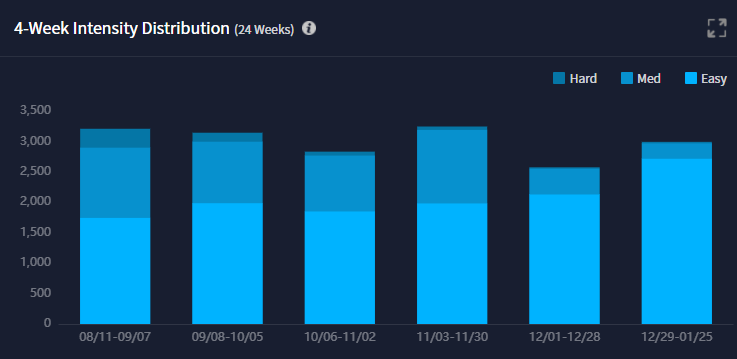It’s been long enough after the “Plane Wreck” Marathon that I decided to register for another. Since that marathon, I’ve raced a few races – all in person, fortunately, and I’ve read a few running books. I’m not fully convinced that it’s going to help an awful lot, and in the planning of the next five months I found myself going back to the Pfitzinger Advanced Marathoning book an awful lot. In all these cases, I had a few sheets of notebook paper where I took notes (a technique I first heard about from The Growth Equation podcast).

Ch-Ch-Ch-Ch-Changes
Since I know full well that repeating the same thing over and over again and expecting a different result is by definition insanity, I decided to change a few things.
One of my first changes was a little bit of a calibration. One thing I noticed is that my maximum heart rate in the Coros App on my phone was quite a bit lower than my observed (not actual) maximum heart race. While I know that sometimes these watches get it wrong and there are some fairly specific tests to determine one’s maximum heart rate, I just used my most recent 5k. This by itself got me 6 points on my “Marathon Level” according to the Coros App. That “Marathon Level” is a fairly untrustworthy number that corresponds with the forecasted marathon finish time. This, of course, seems to be dubious in nature except that the level now seems correct when comparing it to actual marathons.
The second change (and very closely related to the first) was actually paying attention to the heart rate ranges in Table 7.1 of Advanced Marathoning (well, table 7.1 in the 2008 edition). I likely was in the same trap as many other runners – running my easy days too hard. And this seems to be confirmed by Coros, which shows that the percent of my training that was easy was 56%, 59%, 59%, 70%, 61%, and 87%. This is old data, and it was not recalculated after I updated my max heart rate, so those percentages are low. Anecdotally, a lot of my running was in the “Aerobic Power” zone, not the “Aerobic Endurance” zone, and that was above my current easy range.

Looking at the chart above, my late-December to late-January easy-pace percentage was much higher.
Will this all work? Who knows. What I DO know is that I should be following the guidelines of all the “coaches” I’ve been using (which are basically books). When coach says to run easy, one should run easy. ![]()


